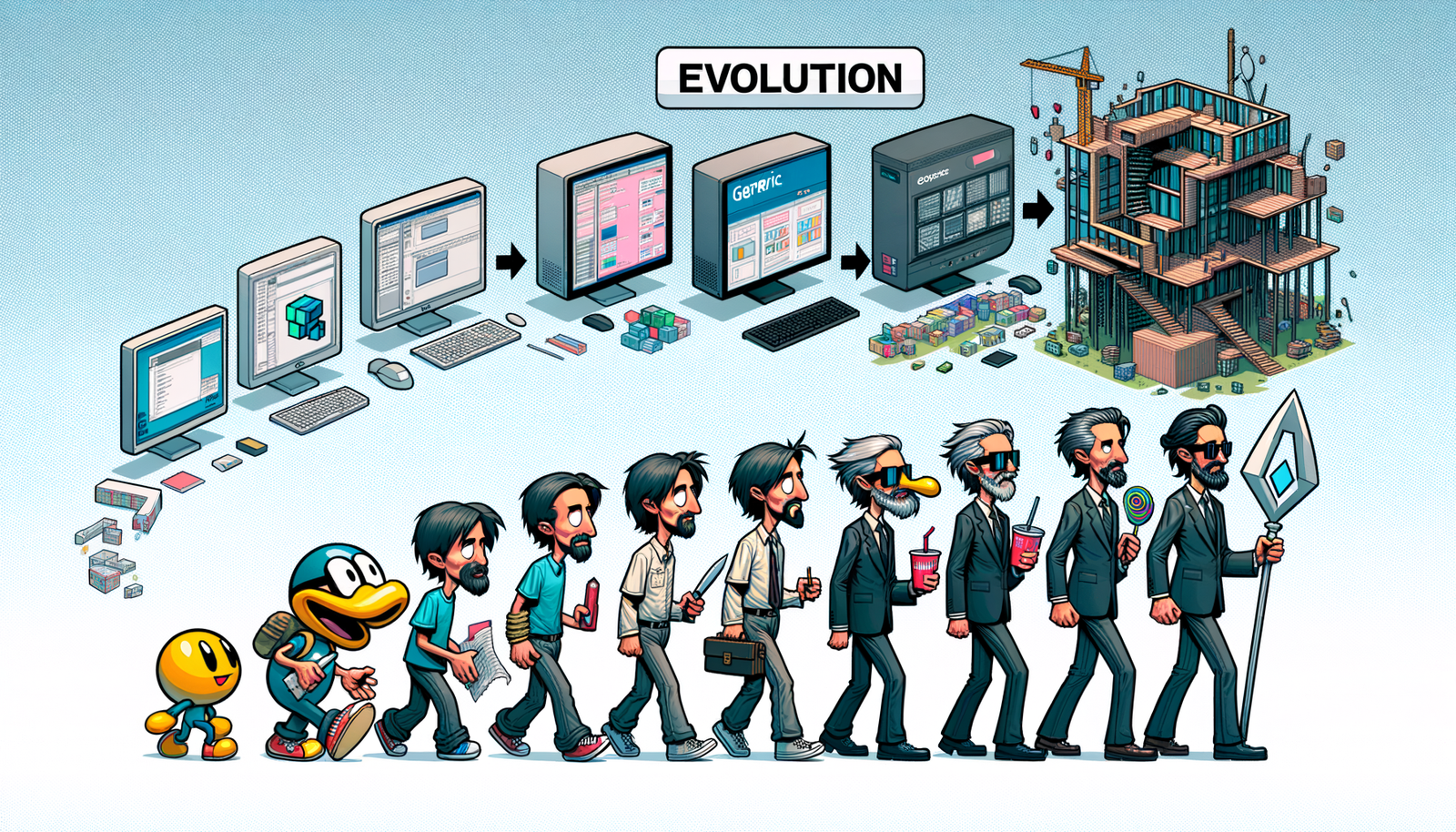Your Cart is Empty
Customer Testimonials
-
"Great customer service. The folks at Novedge were super helpful in navigating a somewhat complicated order including software upgrades and serial numbers in various stages of inactivity. They were friendly and helpful throughout the process.."
Ruben Ruckmark
"Quick & very helpful. We have been using Novedge for years and are very happy with their quick service when we need to make a purchase and excellent support resolving any issues."
Will Woodson
"Scott is the best. He reminds me about subscriptions dates, guides me in the correct direction for updates. He always responds promptly to me. He is literally the reason I continue to work with Novedge and will do so in the future."
Edward Mchugh
"Calvin Lok is “the man”. After my purchase of Sketchup 2021, he called me and provided step-by-step instructions to ease me through difficulties I was having with the setup of my new software."
Mike Borzage
Design Software History: Evolution of Vectorworks: From MiniCAD Origins to Leading BIM Innovator
August 02, 2024 4 min read


Introduction to Vectorworks:
Vectorworks stands as a significant player in the design software landscape, offering a comprehensive suite of tools for architects, landscape architects, and designers. The software’s journey began with its initial development and early versions, which laid the foundation for its current capabilities in the realm of Building Information Modeling (BIM) and beyond.
Founding and Early Innovators:
The origins of Vectorworks can be traced back to 1985 when Richard Diehl founded Diehl Graphsoft. Diehl’s vision was to create a versatile design tool that could cater to the needs of various design disciplines. The early stages of Vectorworks saw contributions from key individuals who played pivotal roles in shaping its development.
First Release and Initial Features:
In 1985, Diehl Graphsoft released MiniCAD, the precursor to Vectorworks. MiniCAD was designed with a feature set aimed at architects, landscape architects, and designers, providing essential tools for 2D drafting. The initial release laid the groundwork for future enhancements and set the stage for the software’s evolution into a comprehensive design tool.
Transition to Vectorworks:
The transition from MiniCAD to Vectorworks marked a significant milestone in the software’s history. In 1999, Diehl Graphsoft rebranded MiniCAD as Vectorworks, reflecting the software’s expanded capabilities. This rebranding was more than a name change; it signified the software’s evolution from a 2D drafting tool to a robust platform capable of 3D modeling and more complex design tasks.
Integration of BIM Features:
The integration of Building Information Modeling (BIM) features was a crucial development in the evolution of Vectorworks. BIM capabilities allowed users to create detailed digital representations of buildings and infrastructure, facilitating better planning, design, and construction. Vectorworks’ BIM features were developed to compete with other industry-leading BIM software such as Revit and ArchiCAD.
Key Versions and Updates:
Several key versions and updates have propelled Vectorworks into the forefront of the design software industry. Notable updates include the introduction of industry-specific solutions such as Vectorworks Architect, Landmark, and Spotlight, each tailored to meet the unique needs of different design disciplines. These updates have solidified Vectorworks’ reputation as a leading BIM tool.
Core Technology and Architecture:
Vectorworks is built on a robust technology stack and utilizes advanced computational methods to deliver its comprehensive suite of tools. A significant technological advancement came in 2009 with the integration of the Parasolid modeling kernel, which enhanced the software’s 3D modeling capabilities and improved overall performance.
Enhanced Visualization and Rendering:
Visualization and rendering have always been critical aspects of design software, and Vectorworks has made significant strides in these areas. The integration of the Renderworks module brought advanced rendering capabilities, allowing users to create photorealistic visualizations of their designs. This enhancement has had a profound impact on architectural and design visualization, enabling more accurate and compelling presentations.
Collaboration and Interoperability:
In today’s interconnected world, collaboration and interoperability are essential for design software. Vectorworks has developed numerous tools and cloud services to facilitate collaboration among team members. The software also supports OpenBIM standards and file formats such as IFC and DWG, ensuring seamless interoperability with other design software and fostering efficient workflows.
Current Trends and Innovations:
The design software industry is constantly evolving, and Vectorworks is at the forefront of several current trends and innovations. The adoption of Artificial Intelligence (AI) and machine learning in design processes is one such trend, offering new possibilities for automation and optimization. Recent advancements in real-time rendering and Augmented Reality (AR) and Virtual Reality (VR) integration are also transforming how designers visualize and interact with their projects.
Impact on Various Design Disciplines:
Vectorworks has had a significant impact on various design disciplines, including architecture, landscape design, entertainment, and urban planning. By providing specialized tools and features tailored to the needs of these fields, Vectorworks has enabled designers to create more innovative and effective solutions. The software’s versatility and comprehensive capabilities have made it a go-to choice for many professionals in the design industry.
Future Prospects and Challenges:
Looking ahead, Vectorworks is poised to continue its trajectory of innovation and growth. Anticipated technological advancements and future updates promise to bring even more powerful features and capabilities. However, maintaining a competitive edge in the rapidly evolving design software industry presents challenges. Adapting to industry needs and staying ahead of technological trends will be crucial for Vectorworks’ continued success.
Summary of Vectorworks’ Evolution:
Vectorworks’ evolution from its inception as MiniCAD to its current status as a leading design software has been marked by numerous key milestones. The software has continually expanded its capabilities and adapted to the changing needs of the design industry, solidifying its position as a comprehensive BIM tool.
Reflection on Vectorworks’ Influence:
The impact of Vectorworks on the design industry is undeniable. By providing powerful tools and innovative features, Vectorworks has enabled designers to push the boundaries of what is possible and create more effective and compelling designs. The software’s legacy is one of continuous improvement and adaptation, ensuring its relevance and influence for years to come.
Final Thoughts:
As we look to the future, Vectorworks is well-positioned to continue shaping the design software landscape. With ongoing advancements and a commitment to innovation, Vectorworks will undoubtedly play a crucial role in the ongoing evolution of design software, helping designers to realize their visions and achieve their goals more effectively.
Also in Design News

Cinema 4D Tip: Matrix-Driven Instancing for High-Performance Scattering
December 20, 2025 2 min read
Read More
V-Ray Tip: V-Ray Anisotropy Techniques for Brushed Metals and Hair
December 20, 2025 2 min read
Read More
Revit Tip: Revit Nested Tagging: Shared Nested Families and Roll-Up Parameters
December 20, 2025 2 min read
Read MoreSubscribe
Sign up to get the latest on sales, new releases and more …


